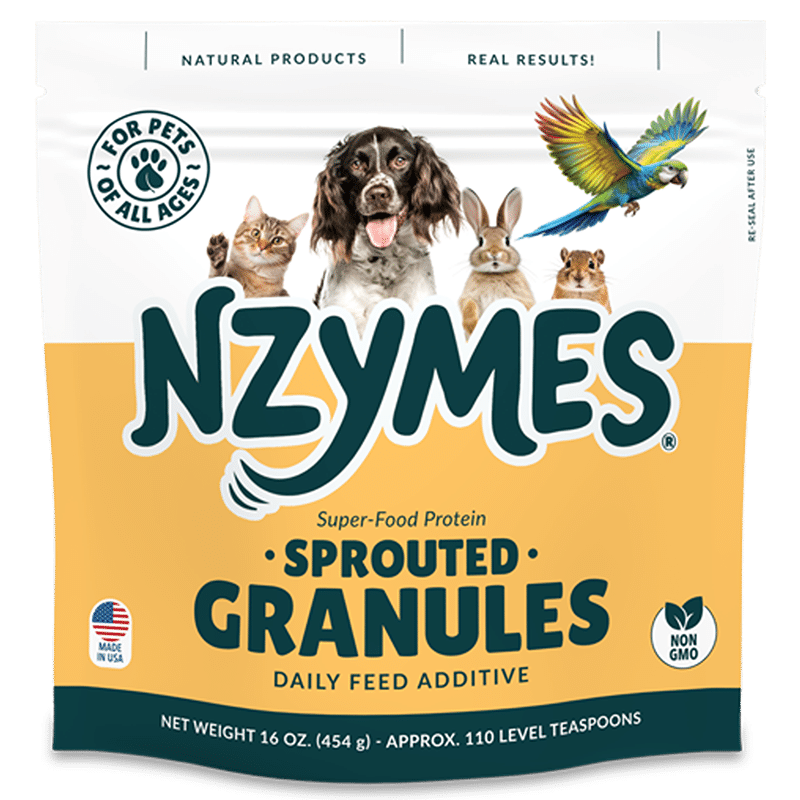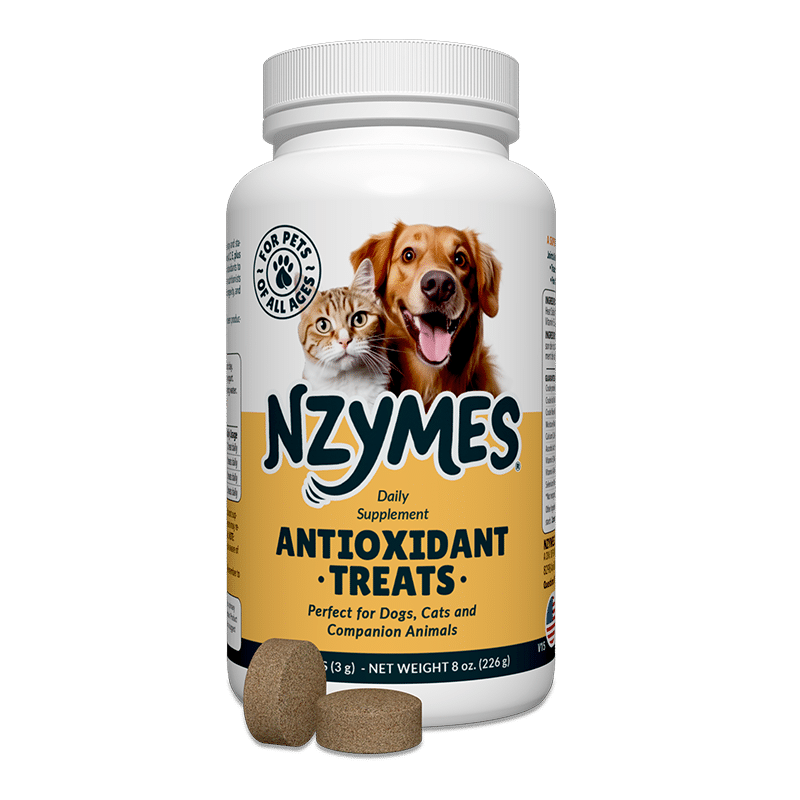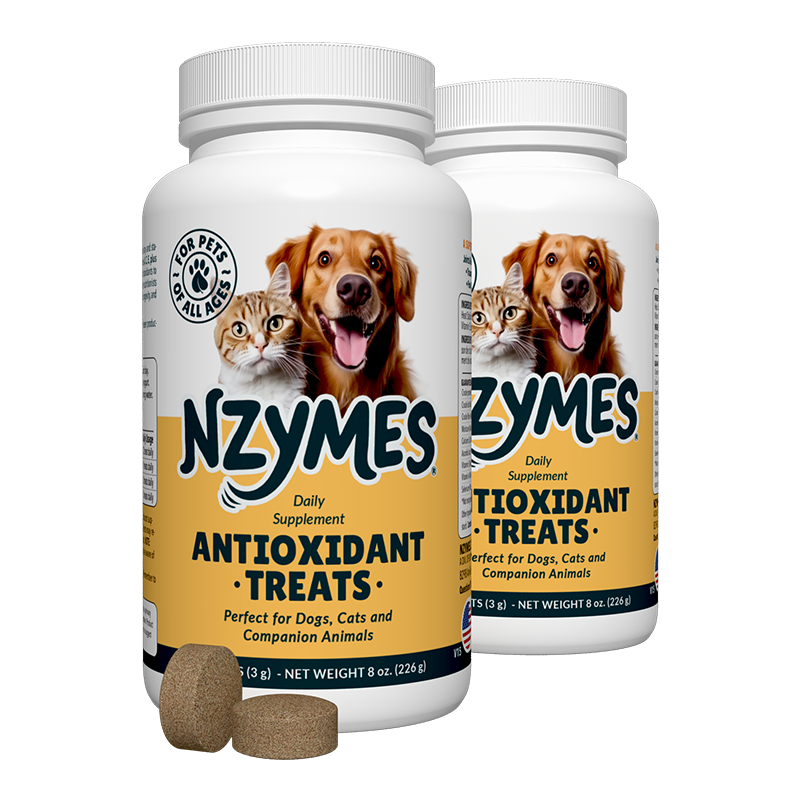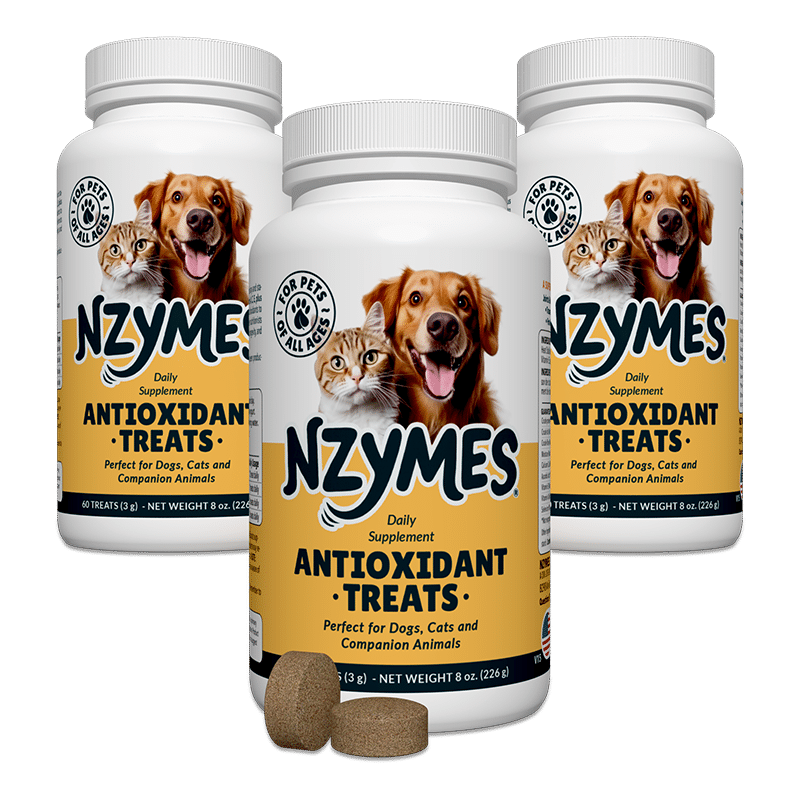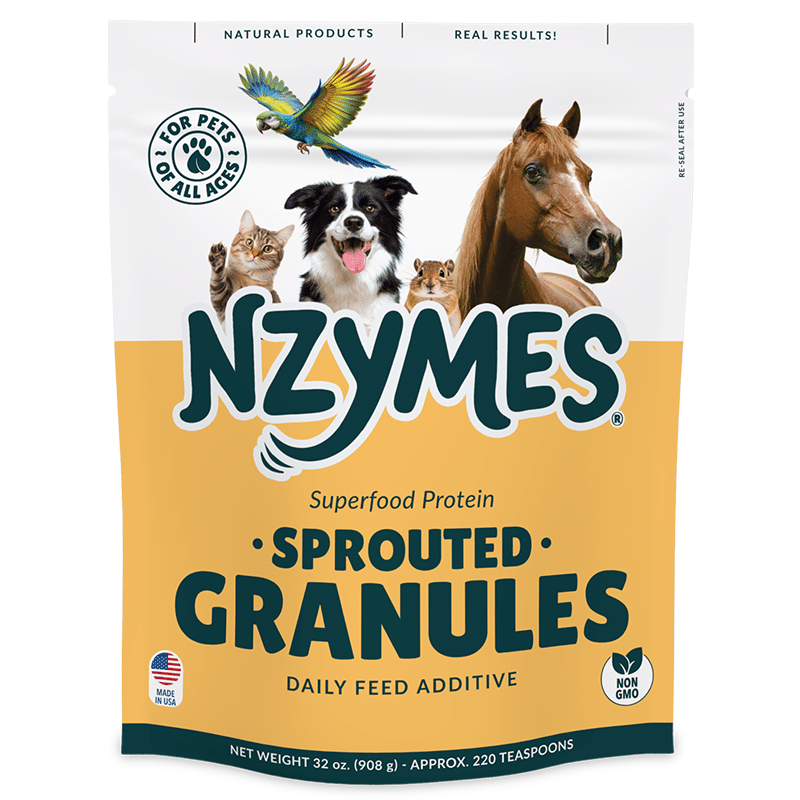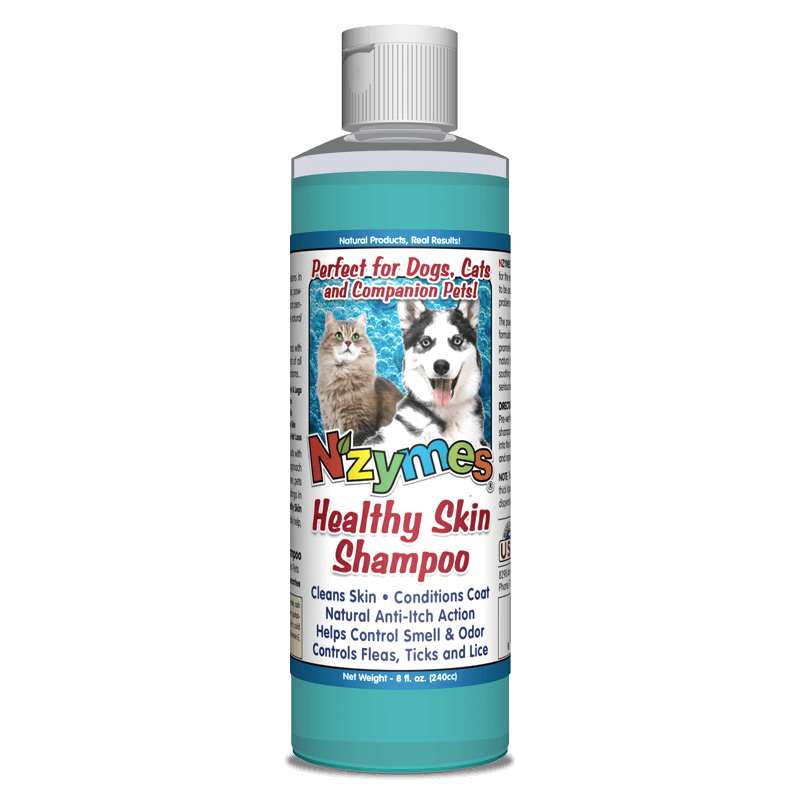Musculoskeletal Inflammation in Dogs – Veterinary Study
And the Effects of Oral Enzyme Supplementation
A Summary of Veterinary Clinical Research of Musculoskeletal Inflammation in Dogs – Compiled and Completed April 15, 1989

Introduction
Musculoskeletal inflammation in dogs is a major cause of discomfort and debility in millions of older canines. Inflammation caused as a result of the excess free radical activity is well established. (Segal, 1984; McCord, 1983). Problems with inflammation in the joints may be due to the degradation of synovial fluid in the cavity through free radical reactions (McCord, 1974).
Abstract
387 dogs with various musculoskeletal inflammation conditions were supplemented over 30 days with the enzyme-rich antioxidant formula found in Nzymes®. The veterinarians prescribing the product reported significant improvements in mobility, range of motion, relief of pain, and reduction of swelling in 340 cases in just 8 days (88%).

Conclusion
All the veterinarians supplementing with the enzyme-rich antioxidant formula found in Nzymes® reported objective evidence of improvements in the relief of inflammatory conditions in 340 of 387 dogs.
Based upon scientific evidence correlating free radical pathology with inflammatory conditions, it is indicated that the special antioxidant formula used in the whole food supplement as the probable mode of action to achieve these results.
Nzymes® whole-food antioxidant enzyme blend emphasizing Superoxide Dismutase & Catalase. Product derived from blends of “live” dried and ground sprouted soy protein.

Methods
387 dogs, ranging in sizes from 10 to 125 pounds, in ages from 6 months to 18 years, were reported from the six contributing veterinarians. In all cases, the musculoskeletal inflammation issue were noninfectious and either the result of injury, stress, developmental conditions, or aging. The main characteristic was osteoarthritis with clinical signs of loss of mobility and movement, pain, and in some cases edema and swelling. In most cases, the patient had received no prior treatment.
In all cases, the dried and ground sprouted soy protein formula found in Nzymes® was used as the primary therapy. In all cases, patients were symptomatic at beginning of the trial. The diagnosis was made by the veterinarian using standard techniques including radiographic evaluation, pinprick test, and palpitation, as well as owner reports.
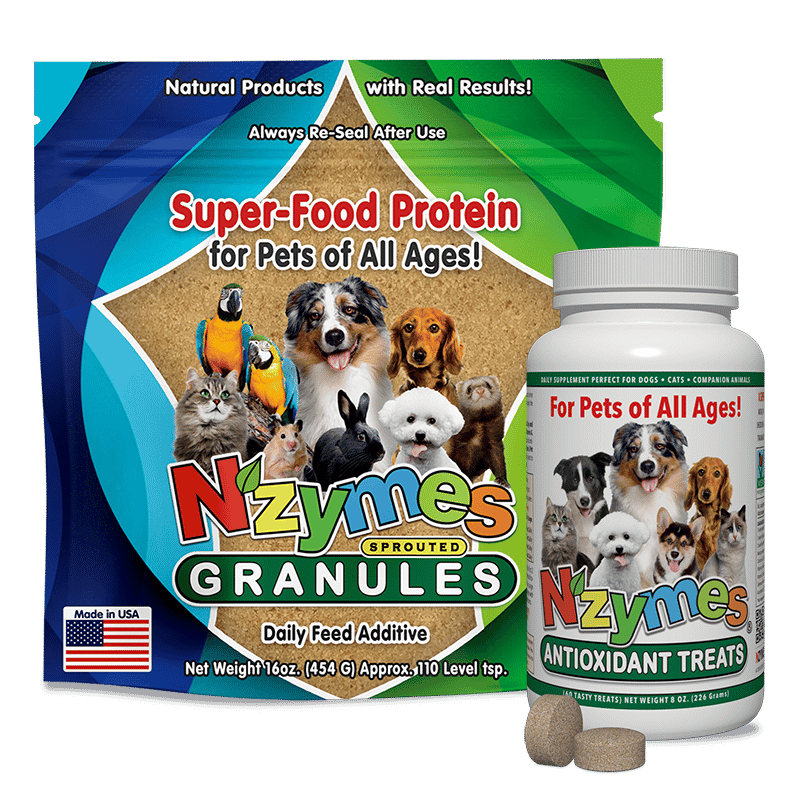
Materials
The use of “injectable” Superoxide Dismutase was thought to be the dawning of a new era in arthritis treatment. Its anti-inflammatory effect is well documented and thought to be due to Superoxide Dismutase dismutase free radical scavenging ability. However, limited by cost and convenience, Superoxide Dismutase is rarely utilized in clinical settings. The limitations of injectable Superoxide Dismutase for use in a clinical setting have led to the development of a unique, enzyme-rich vegetable (sprout) source for this and other related antioxidant enzymes (i.e. catalase).
The enzyme-rich antioxidant formula found in Nzymes® has established the ability to affect blood levels of Superoxide Dismutase and catalase (Rothschild, et. al., 1988). In light of the correlation between free radicals and inflammation, this study was conducted with the help of veterinarians in private practice to determine the overall effect of this preparation on the symptoms of inflammation in canines.

Findings
Of the 387 cases reported in this study, 340 patients demonstrated increased mobility, function, and range of motion, with decreased pain and swelling in affected areas. Although 63 of the 340 patients did not show significant improvement until the fourth week, the average response time of the entire group was 8 days.
All 340 cases which demonstrated improvement also reported increased levels of mobility as treatment time extended past the initial response point. In most cases, the equivalent of 400 mg. of the sprouted formula found in Nzymes® was given per day for every 60 pounds of body weight for the first two weeks. After the initial response, maintenance dosages of 1/2 of the initial amount were sufficient to sustain the desired results.
Secondary Observations
Along with obvious benefits to inflammatory conditions, the 340 patients demonstrated one or more of the following changes:
• Increased energy • Alertness • Stamina • A return of appetite
• Accelerated healing in cases with recent surgery or trauma

Study References
Joint Pain Cushing, L.S., Decker, WE., Santos. F.K., Schulte, FL., and Huber, W. – Orgotein Therapy For Inflammation In Horses. Mod. Vet Pract. 54, 17-20. (1973).
Inflammation Huber, W., Schulte, T.L.. Carson S. Goldhamar, R.E., and Vogin, E. – Some Chemical And Pharmacological Properties Of A Novel Anti-Inflammatory Protein. Toxic appl. Pharmac. 12,308. (1978),
Canine Hip Dysplasia Faull, G.L., Baker, B de B, Walt. H. S. and Hofmeyr, C.F.B. – Clinical Trails With Orgotein (Palozein), JI, 5, Air. Vet, Assoc. 47, 38-40. (1976).
Pano McCord, J.M. – Free Radicals and Inflammation Protections of Synovial Fluid by Superoxide Dismutase. Science 185. 529-31. (1974).
OCD McCord, J.M. The Superoxide Free Radical: It’s Biochemistry and Pathophysiology. Surgery 94: 404-408, (1983).
HOD Parks, D.A., Bulkey, G.B., Granger, D.N., et al. – Ischemic Injury in the Cat Small Intestine. Role of Superoxide Radicals. Gastroenterology, 82:9-1 5, (1982).
Wobblers Rothschild, P., Ordonez, L., – Absorption study with Superoxide Dismutase, University Labs Press, 2639 S. King St. Honolulu, HI 96828. (1988).
Ligament Damage Segel, A.W., – Superoxide Generation, Cytrochrome B-245, and Chronic Granulomatosis Disease. Advances In Inflammatory Research, vol. 8. New York. Raven Press. pp. 55-82. (1984)

